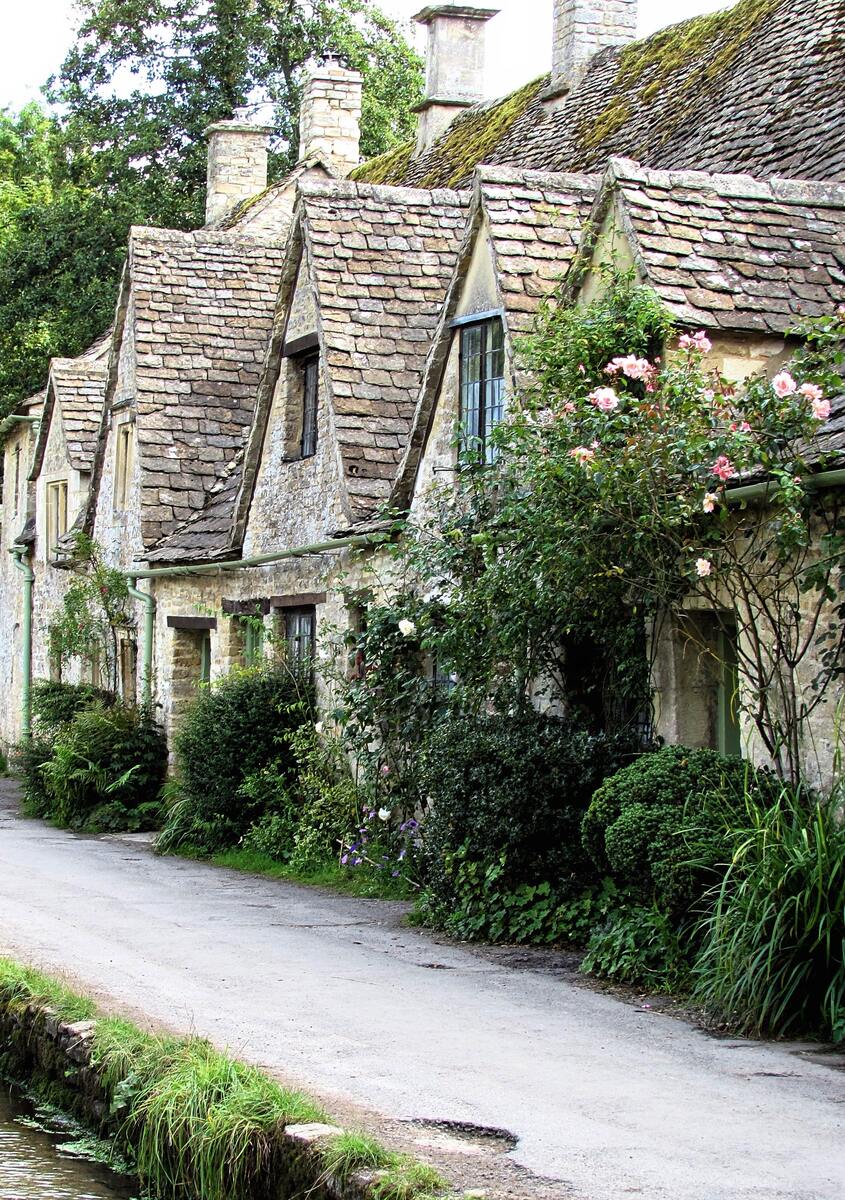Explore chocolate box villages
Last updated: November 27, 2021

The Cotswolds spreads its hills and chocolate box villages across six of England’s most rural counties. It is a fairytale land of the most quaint civil parishes, each filled with stone cottages perched around lively market squares, elegant country houses set into landscaped gardens, and striking medieval ruins reclaimed by nature.
Covid safer in the Cotswolds
Many attractions, such as country houses, museums and the like now require visitors to book ahead so they can better plan for social distancing measures, and it's advised to pre-plan restaurant and hotel bookings too.
What to see in the Cotswolds
While so much of what’s great about the Cotswolds is in the wilds of the countryside, the area is at its absolute best when explored from any number of its stunning villages. Start at delightful Castle Combe with its whimsical streets lined with fairytale cottages hung with flower baskets, each as perfectly charming as the next. Take a peek at the delightful bridge that arches over the river, and then wander up to the medieval Market Place and continue along the footpath into the surrounding woodlands to indulge in the crisp country air.
Mamesbury, England’s oldest town, is home to a striking viaduct and the delightful Abbey House, Gardens, while Stow-on-the-Wold is another characterful market town built around a lively market square. But the local church at St Edward’s is perhaps one of the Cotswolds’ most visually impressive, with a doorway that looks as though it had been stolen from Narnia, with two Yew trees growing either side of the door, creating a mythical portal of ancient wood blending into medieval stone. From here, the sleepy villages of Upper and Lower Slaughter (a peculiarity of language — Slaughter is actually from the Old English word ‘Slohtre’ meaning ‘muddy’), Icomb and Broadwell are all easily reachable.
The best way to see as much (or as little) of the Cotswolds as you like is by sampling its rural charms via the Cotswolds Way — a 164-kilometre footpath that stretches from Bath up to Chipping Campden. Walkers will stumble into such iconic sights as the folly of Broadway Tower and the 330-metre high Cleeve Hill, which offers the most alluring 360-degree vistas of the breathtaking countryside.
Escape the crowds in the Cotswolds
Romantic ruins such as the 13th century Hailes Abbey have a museum on site and get a trickle of visitors, but are best viewed from the surrounding oft-empty hills over a pre-packed picnic, where the medieval silhouettes can be admired as a backdrop of historic, atmospheric icons lost to time and nature, while petite villages such as Naunton have the bucolic charms of Cotswolds celebrities such as Castle Combe but far fewer admirers. The eastern edges of the countryside around lovely Chipping Norton hold a great deal of scenic, rural escape options, but the 15th century ruins of Minster Lovell Hall and Dovecote are by far the most enchanting.
The Cotswolds has its own Stonehenge in the shape of Avebury Ring — the biggest Neolithic circle in Europe and a couple of thousand years older than its southern cousin — but inexplicably, and despite the horrific road cutting through the middle of it, it’s often bereft of crowds… although it can be quite popular with the local sheep.
Useful links Find up-to-date guidance on travel, safety, Covid-19 research and more.
RightRooms believes all information to be correct at time of going to press. As guidance, research and facts around Covid-19 are changing constantly, the information provided here is for general information only and does not constitute professional advice. Please check with venues, locations and attractions before travelling.
